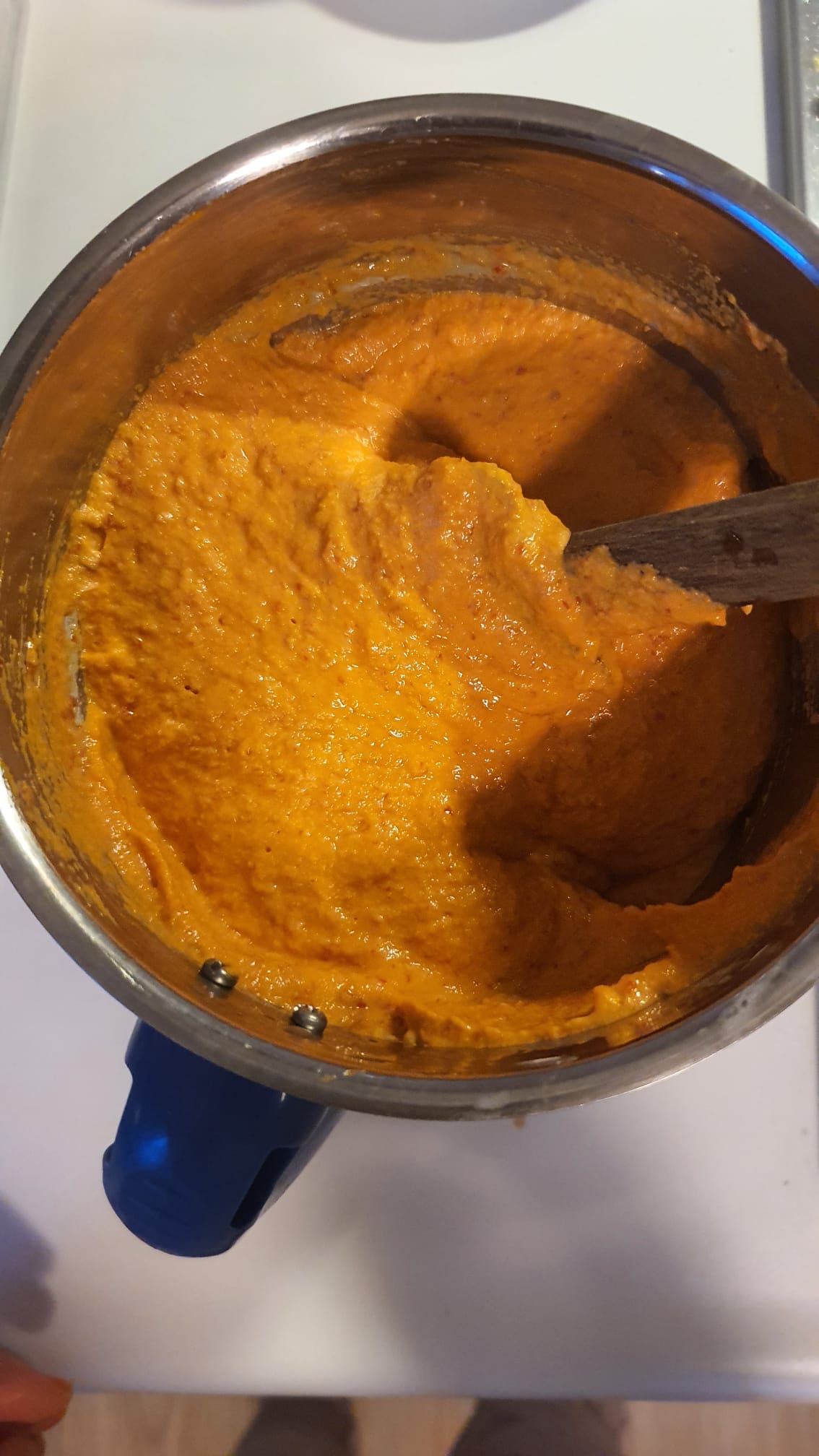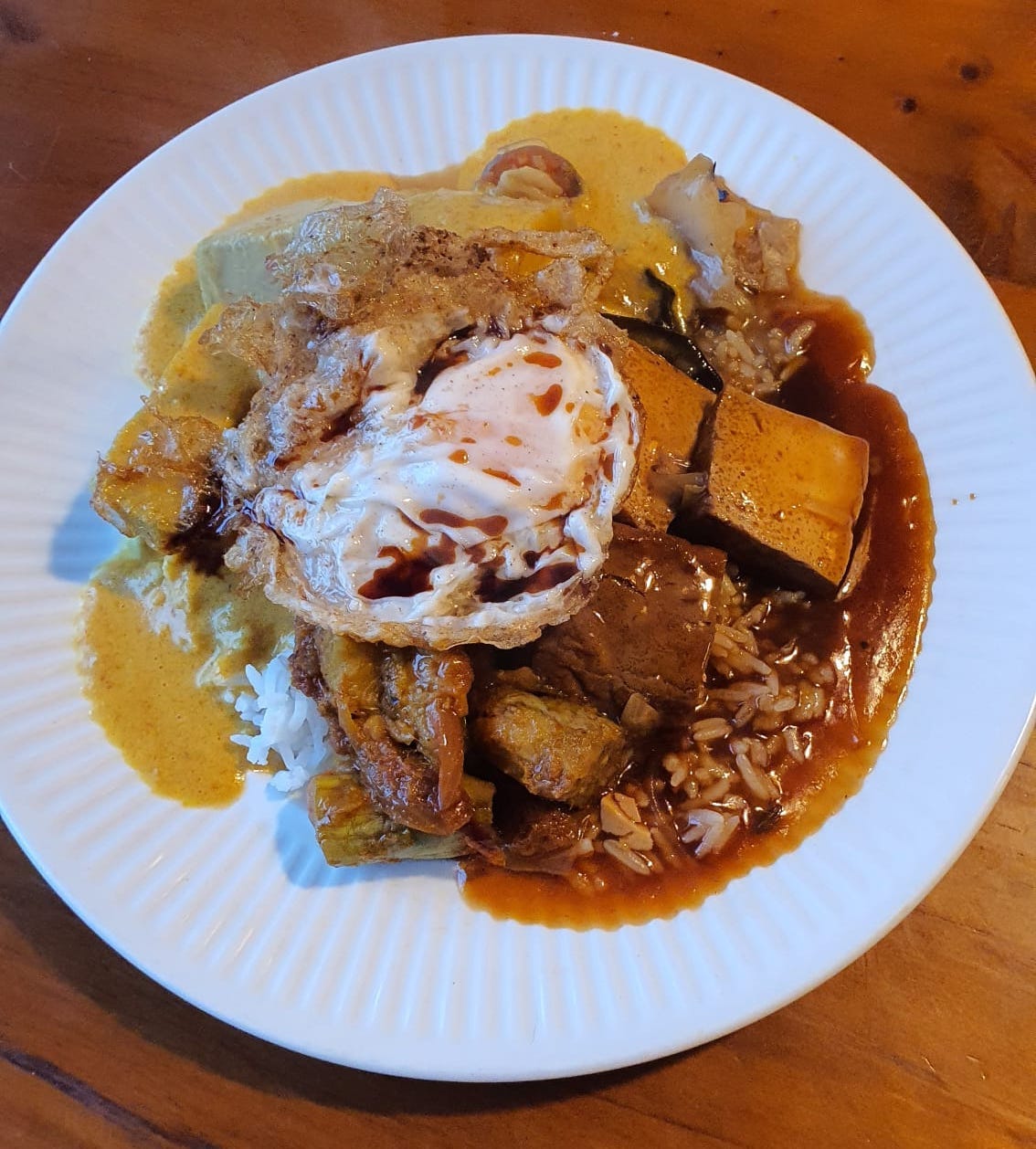A couple of years ago, I was asked if I had a multipurpose recipe for rempah, a genre of spice pastes that forms the backbone for so many traditional dishes in Singapore. I didn’t. I’m not the sort of cook that plans very much in advance - the type that has homemade chicken stock frozen in ice cube trays or a well-maintained sourdough starter. If I need rempah for a dish, I’ll make it, but just enough and never in advance. This year is different though. Everyone’s on their 2024 resolutions, and I’m determined to be a more organised cook, one who always has a jar of homemade rempah within reach. This is a sensible resolution because rempah is a workhorse in the kitchen. A spoonful with a squirt of fish sauce and a generous sprinkle of palm sugar livens up any vegetable stir-fry, and provides instant flavour to raw meats and seafood when used as a marinade.
It might seem extravagant, ludicrous even, to make your own rempah, especially since it is a time-consuming affair and one can easily find jarred spice pastes at any supermarket. (Most of the time, these are known reductively as curry pastes, though their utility in the kitchen far outstretches the realm of curries.) However, homemade rempah is worth making because it’s immediately distinguishable; store-bought pastes tend to be far too heavily seasoned and full of acidity regulators; I find myself having to mellow them out with copious amounts of coconut milk, which ends up diluting the actual flavour that you want to keep in the dish.
Down the road from our place is a little Swiss deli, Store 317. (I recently did a launch event there to celebrate Plantasia!) The chef, Marcel, who runs the store with his wife Angèle, used to live and work in Bali, and has gotten tremendously good at making spice pastes (or bumbu, as it is known in Indonesia). Each time I buy a jar, I’m rewarded with boldly flavoured dishes with very little effort on my part. As you can imagine, it’s not a cheap habit, so I was eager to start my year with a big batch of rempah.
The first step involves grinding a medley of aromatics to a paste:
Alliums - Traditionally, these would be small, purplish Asian shallots and garlic, but as someone who lives outside of Asia, I’ve found red onions to be a perfectly acceptable substitute.
Chillies - Depending on the recipe, you might encounter fresh red chillies, dried chillies, or a combination of both. While the fresh chillies are present more for heat, dried red chillies lend intensity of colour. Because the latter is usually present in abundant quantities, they are deseeded by slitting the dried chillies so that the seeds, where the largest concentration of capsaicin lies, will be loosened during the soaking process. It’s wise to shop for the mildest dried chillies you can find, but one might not have the luxury of choice. In that case, here’s my solution: Soak the dried chillies in boiling water until soft, then drain and submerge in water from the tap, scrunching the chillies up in your hands. Repeat a couple more times. This is a rather effective method, though always remember to wear gloves. I once did this with my bare hands before heading to bed, and woke up with a terrible burning sensation in my hands.
Nuts - Nuts function as thickeners, useful when you want a sambal, curry, or sauce with some body. In a rempah, candlenuts are the most common choice. They are pale and waxy, bearing resemblance to macadamias, though these are toxic and can cause laxative effects when eating raw. You don’t have to make a special trip to the wet market or Asian grocer for these; almonds, cashews, and macadamias are all fine substitutes.
Fragrant roots and grasses - Turmeric, galangal, ginger, and lemongrass each carry their own unique fragrance and mould the distinctive character of the rempah - and eventually, dish - that you’re making. Because these can be very fibrous, slice them thinly before grinding.
Traditionally, the ingredients would be crushed between two granite-hewn rocks - either in the form of a pestle and mortar, or a batu giling, a massive rectangular slab with a hefty roller to match. These pieces of equipment once took up places of pride in many Singaporean kitchens, but these days, using an electric blender is mainstream. My equipment of choice is a Preethi grinder, a powerful machine that is familiar to Indian cooks, but a regular blender will do.
‘Pecah minyak’
The ground paste is fried in an abundance of hot oil in a pot (Image A). When I say abundance, I really do mean it. While working as a cook at Candlenut, the ratio I was taught was a 1 to 1 ratio of oil to spice paste. It might seem like an obscene amount, but one should not be tempted to skimp. Unlike the gentle sweating of aromatics in European-style cooking, the technique for frying rempah is tumis, which is outright frying. For this, the oil has to be generous; excess oil can always be skimmed off at the end.
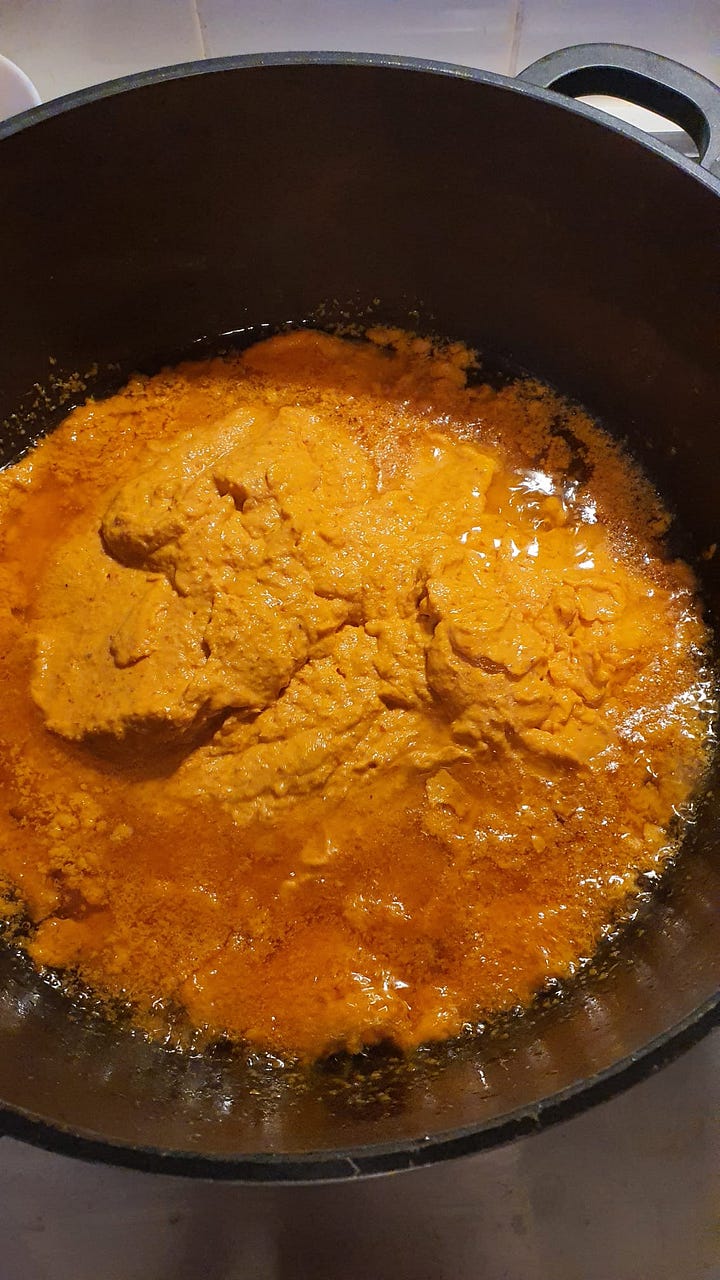
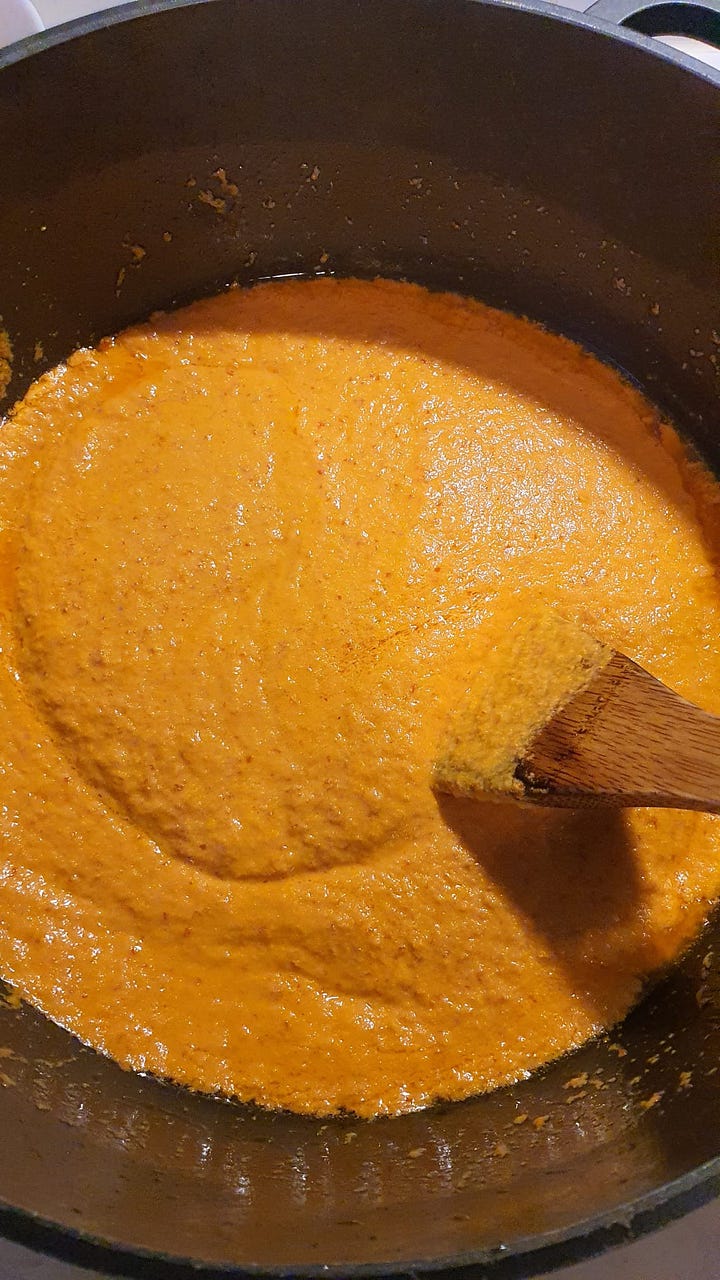
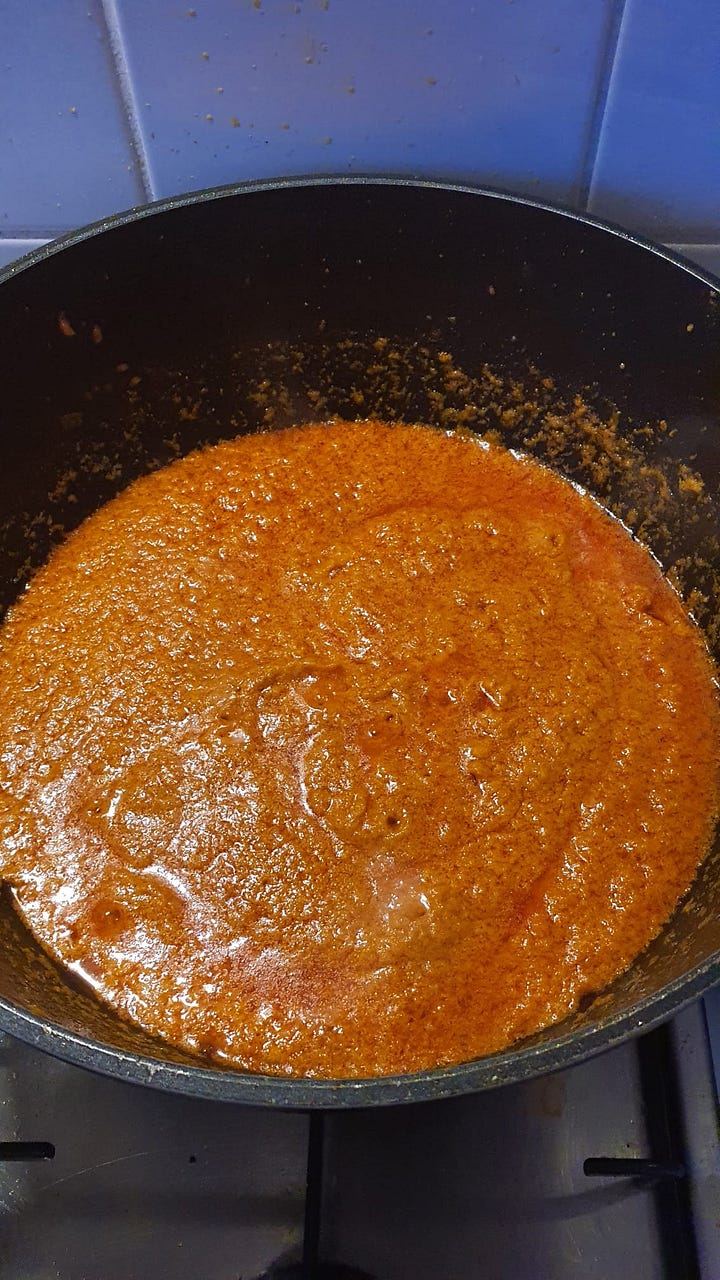
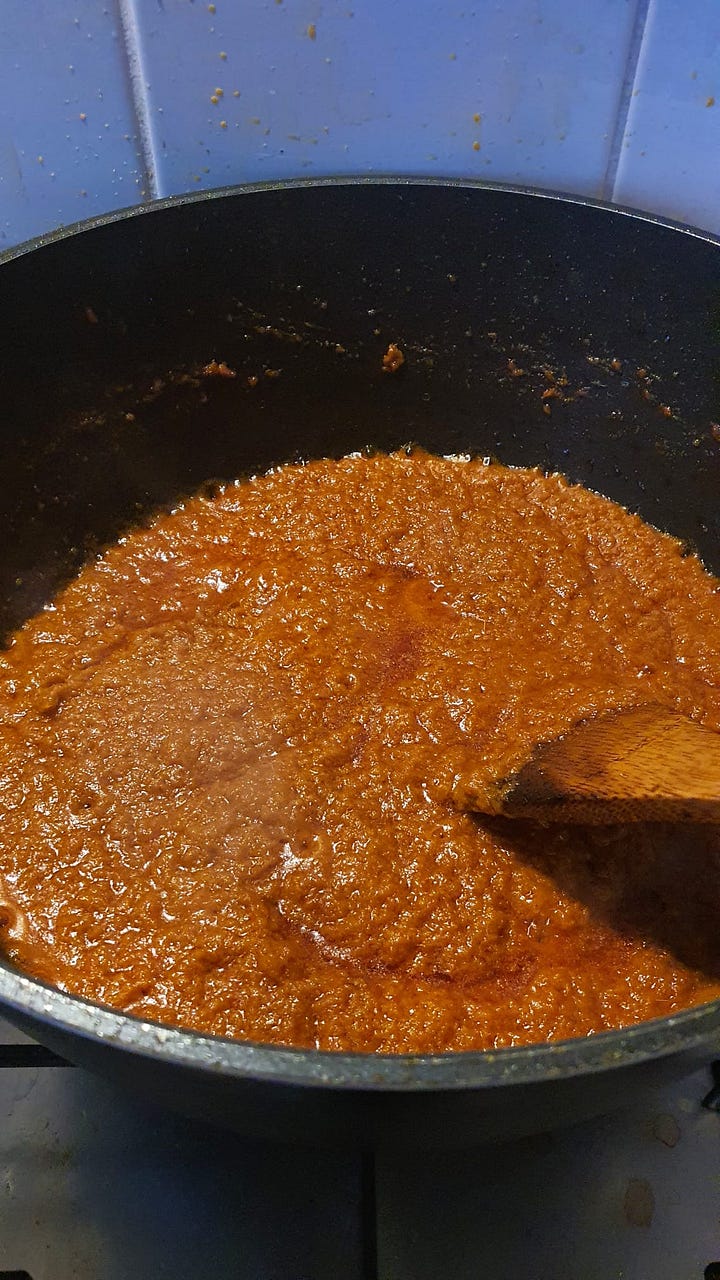
Within moments of the paste being stirred into the oil, the two become one in the pot (Image B). This is because onions, garlic, and chillies inherently have a tremendous amount of water; this moisture is what forms an emulsion with the oil in the pot. The point of frying the rempah is to drive off sufficient moisture from the mixture so that the emulsion of water and oil breaks (Image C). You want to continue cooking the mixture until it takes on a nubbly texture akin to keema (Image D). The visual marker of when the rempah is ready is termed pecah minyak, literally the breaking of oil. In European cooking, the breaking of an emulsion is a mistake that suggests a lack of technique on the part of the cook; broken mayonnaise or cream sauces are problems to be fixed. But in a rempah, the breaking of the emulsion and the surfacing of red oil, signals when the flavour of the paste has been drawn to its fullest intensity.
Hainanese curry rice
We had two vegetarian guests for lunch over the weekend and with homemade rempah on hand, it was easy deciding what to cook. Hainanese curry rice is a hawker favourite that is an amalgamation of a collection of dishes (usually curry, fried pork, chap chye, sambal, and something braised in lou or lor) served over rice. It’s a sloppy, gooey, messy heap, one that’s decidedly not made for the gram:
It felt like an especially apt dish to serve because our guests had lived in Malaysia for a couple of years and were missing those flavours. I made:
Chap chye - This dish can be as elaborate or as simple as you like; you’ll find a recipe for a more elaborate version as well as a past write-up on the dish here. I made a super simple, everyday version, seasoned with taucheo (yellow soybean paste) instead of the fermented tofu that I typically use.
Jackfruit and potato curry - In a pot, I mixed a few spoonfuls of prepared rempah with some coconut milk, and simmered young jackfruit and potato in the mixture for about 20 minutes, or until the potatoes were tender. I thickened the gravy separately with cornstarch, a Chinese technique that made its way into the local appreciation of curry. The viscous and gloopy nature of Hainanese curry is its distinctive trait, one that allows the gravy to better coat each grain of rice.
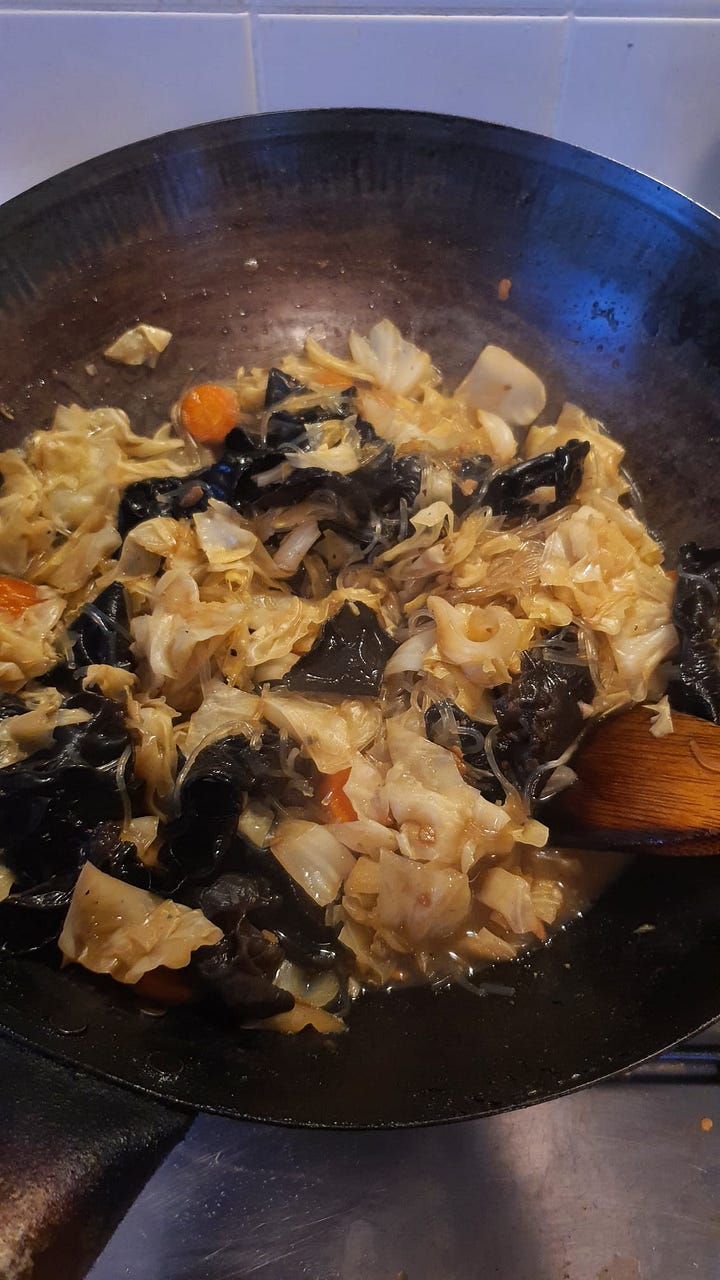
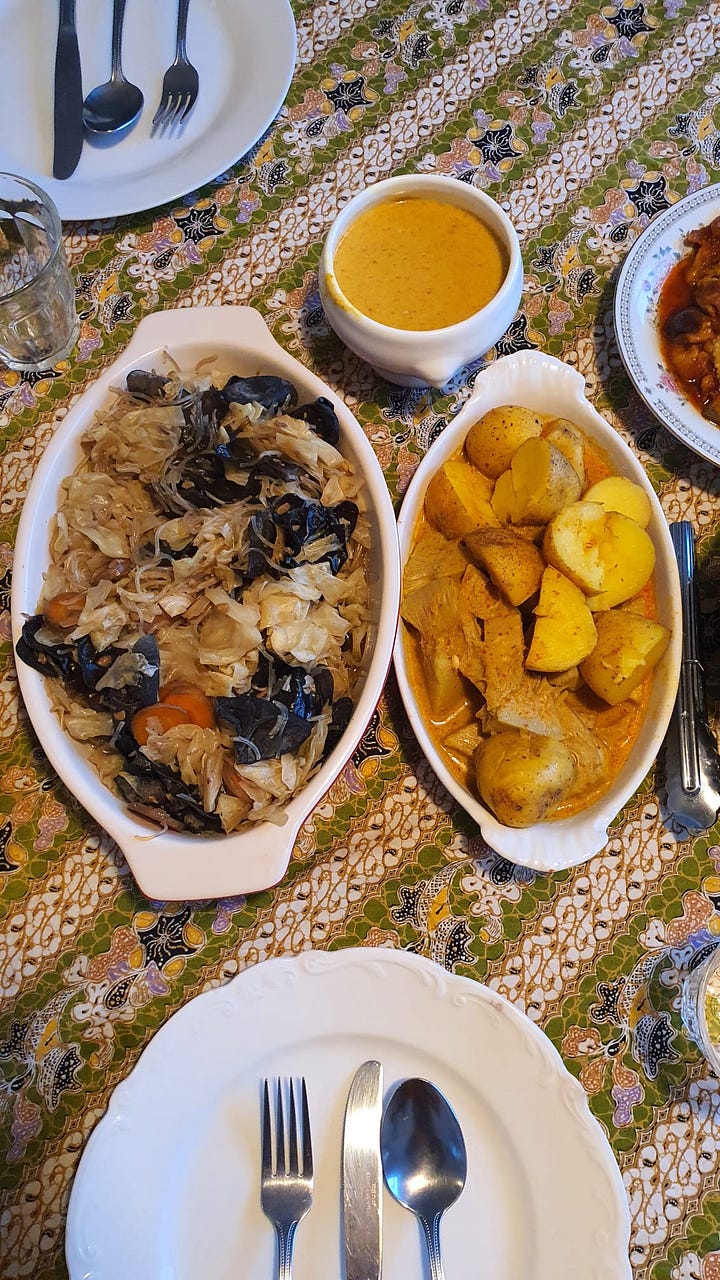
Lor tofu and mushrooms - TW Lim, author of Let Them Eat Cake and the guest newsletter on lor arh last year, shared the technique of searing slabs of tofu before braising them in a soy-based liquid. This initial frying produces a blistered skin, not unlike that of taupok (tofu puffs), that sponges up the braising liquid beautifully.
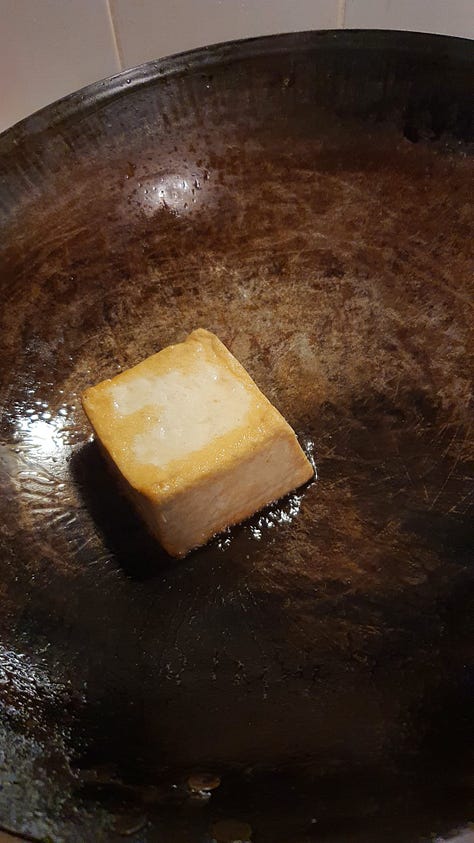
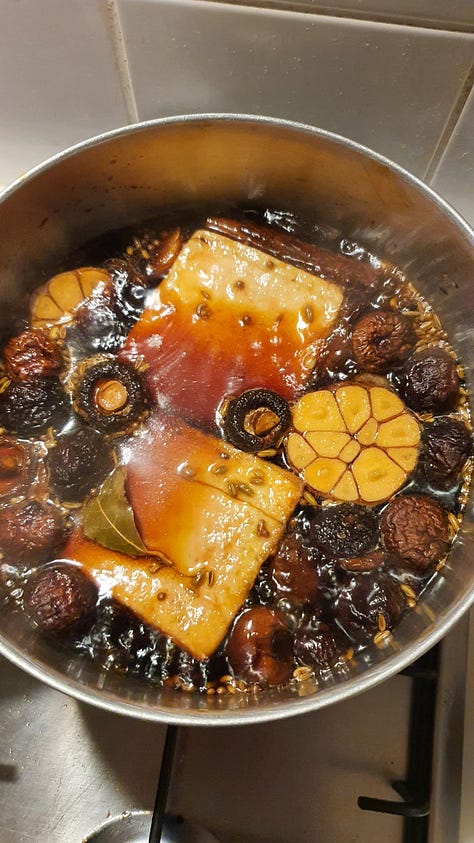
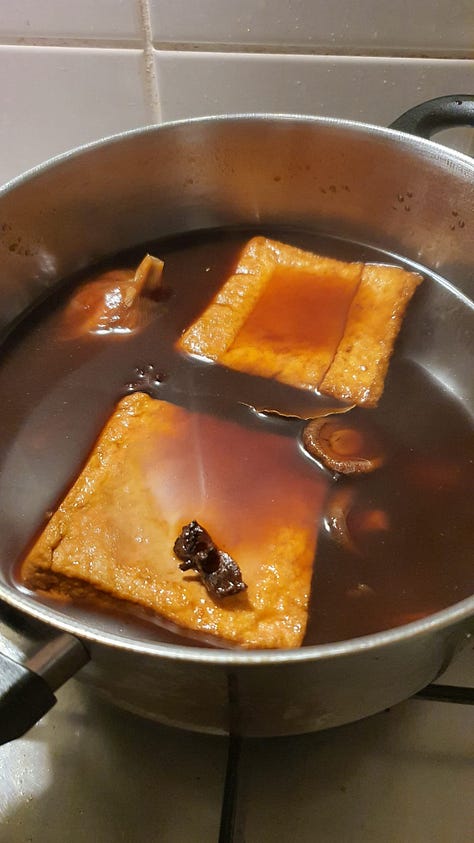
Sambal eggplant - The sambal was nothing more than a couple spoonfuls of rempah, heated through with some salt, tamarind water, and gula melaka to taste. Then, I folded through some sweated red onions and charred eggplant. The best eggplants to char are ones that are long and slender - not globe, please - which soften by the time their skins char. Place them in a covered container or bowl to loosen their skins before peeling and cutting into bite-sized pieces.
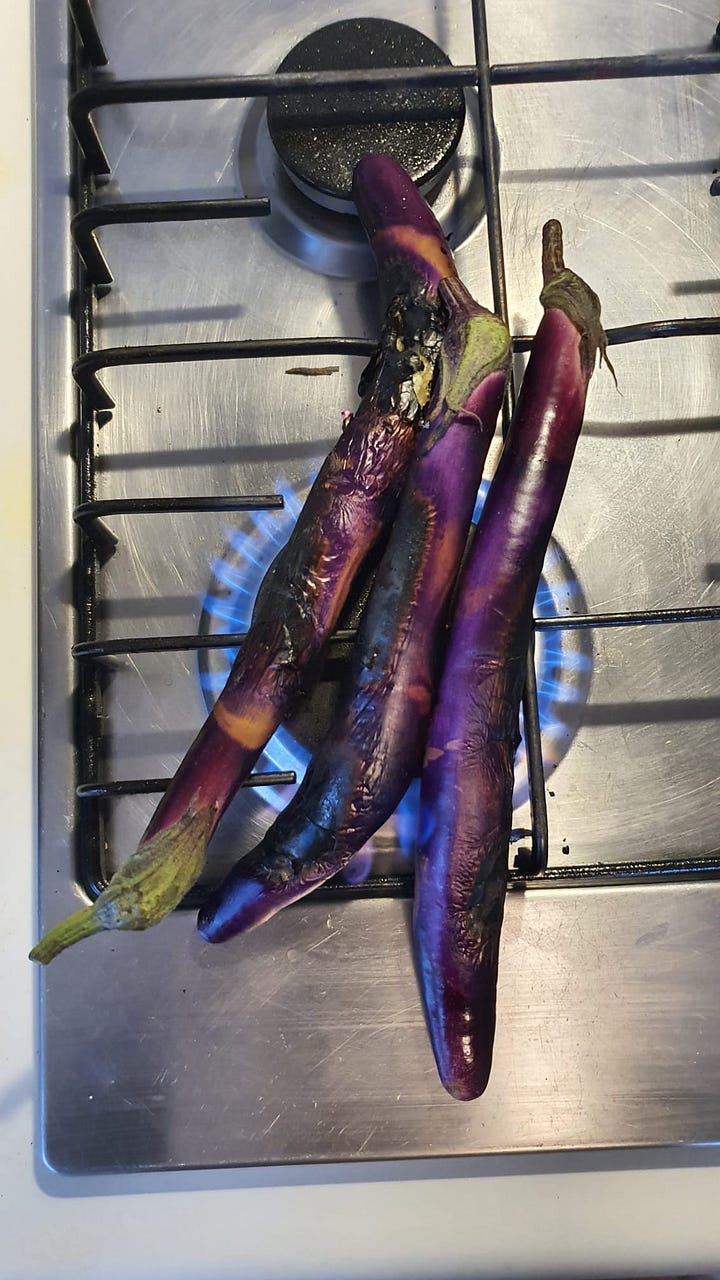
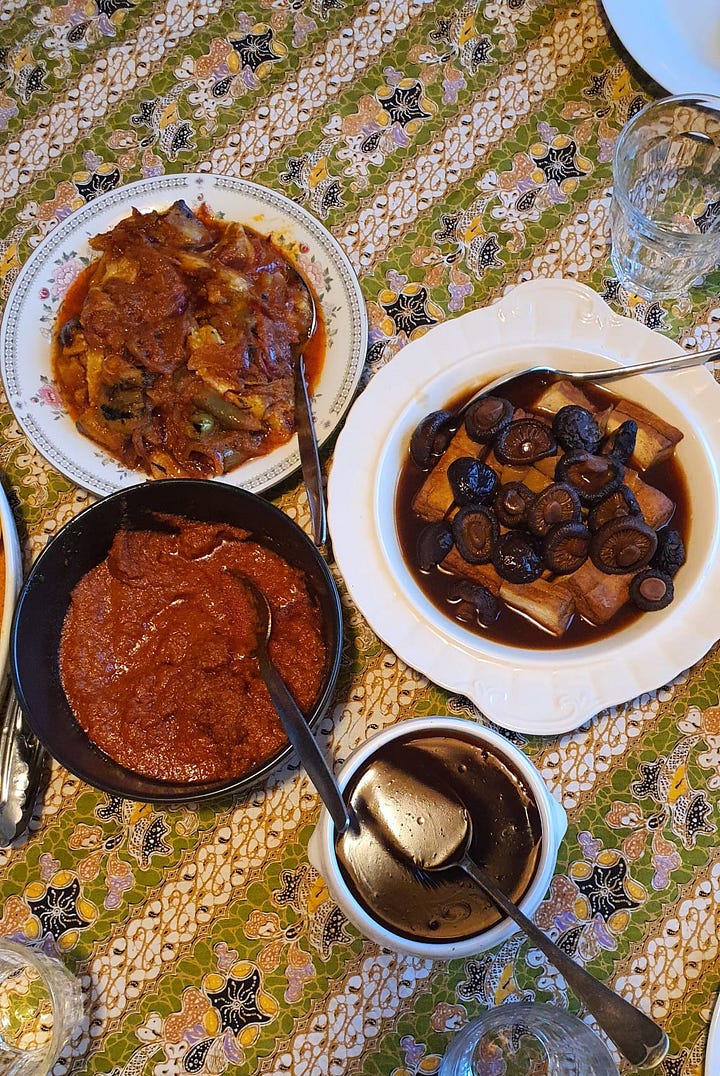
Fried mushrooms, inspired by Hakka fried pork (recipe to follow) - The button mushrooms are coated in a fermented tofu mixture, and subsequently in a mix of starches before deep-frying.

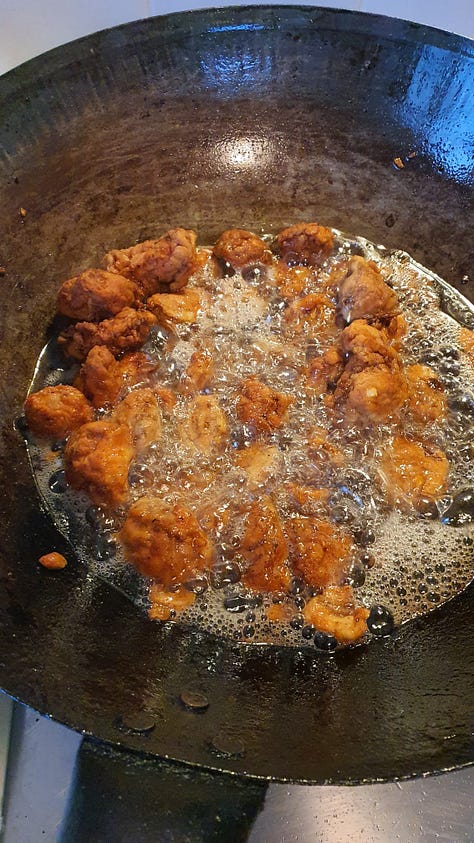
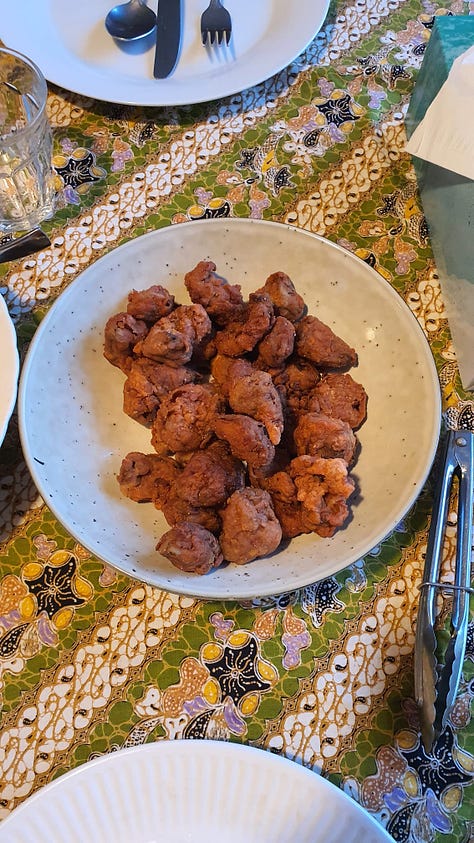
Everything looks like it took a lot of time to prepare, but frankly, once you have homemade rempah, it’s a breeze. It takes about 2 hours in total to prepare the rempah, but your effort will pay dividends in the weeks and months to come!
Multipurpose rempah
Makes 4½ pounds or 2 kg




